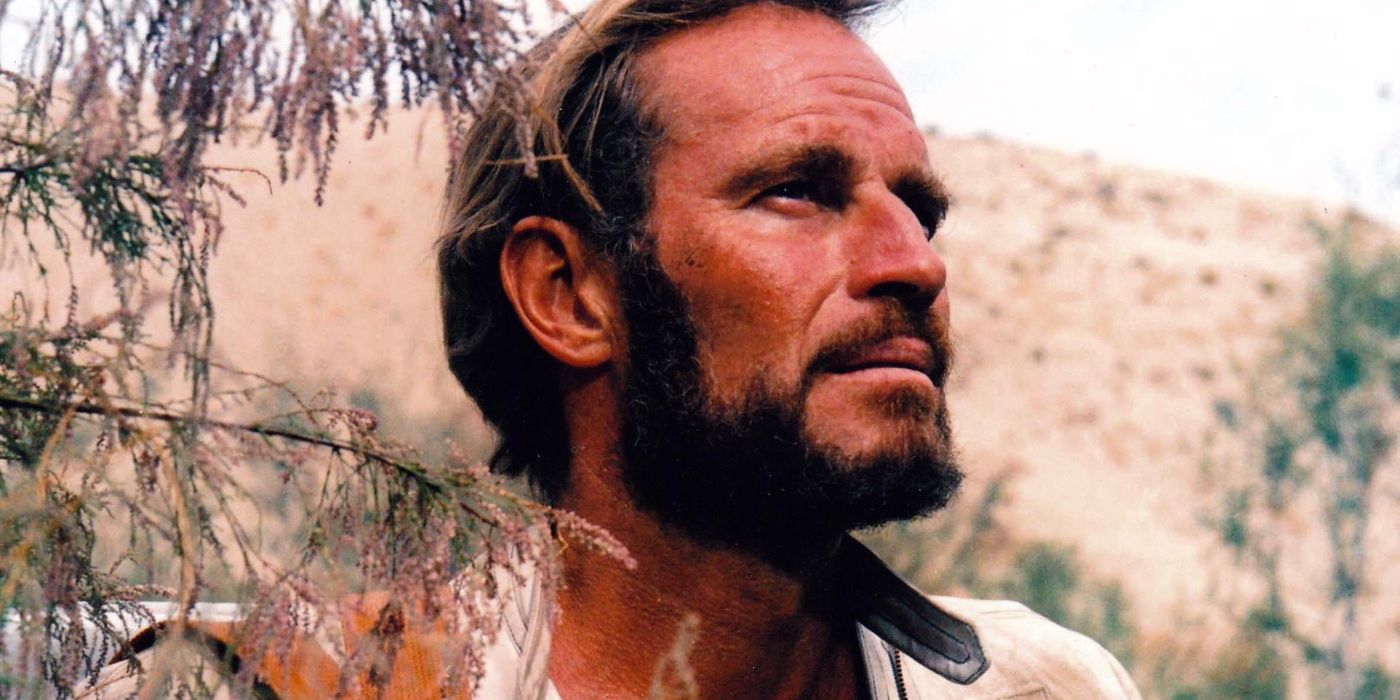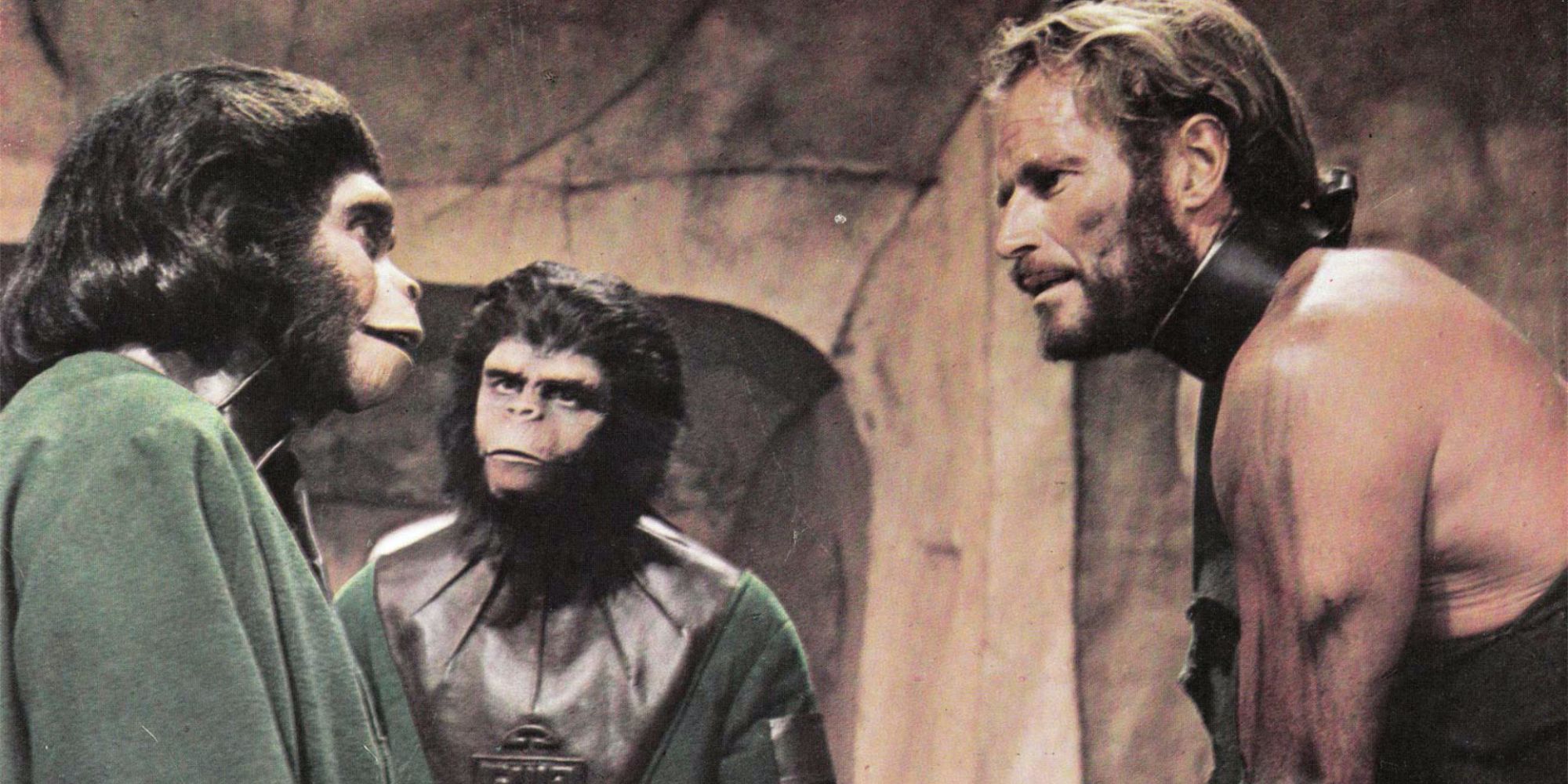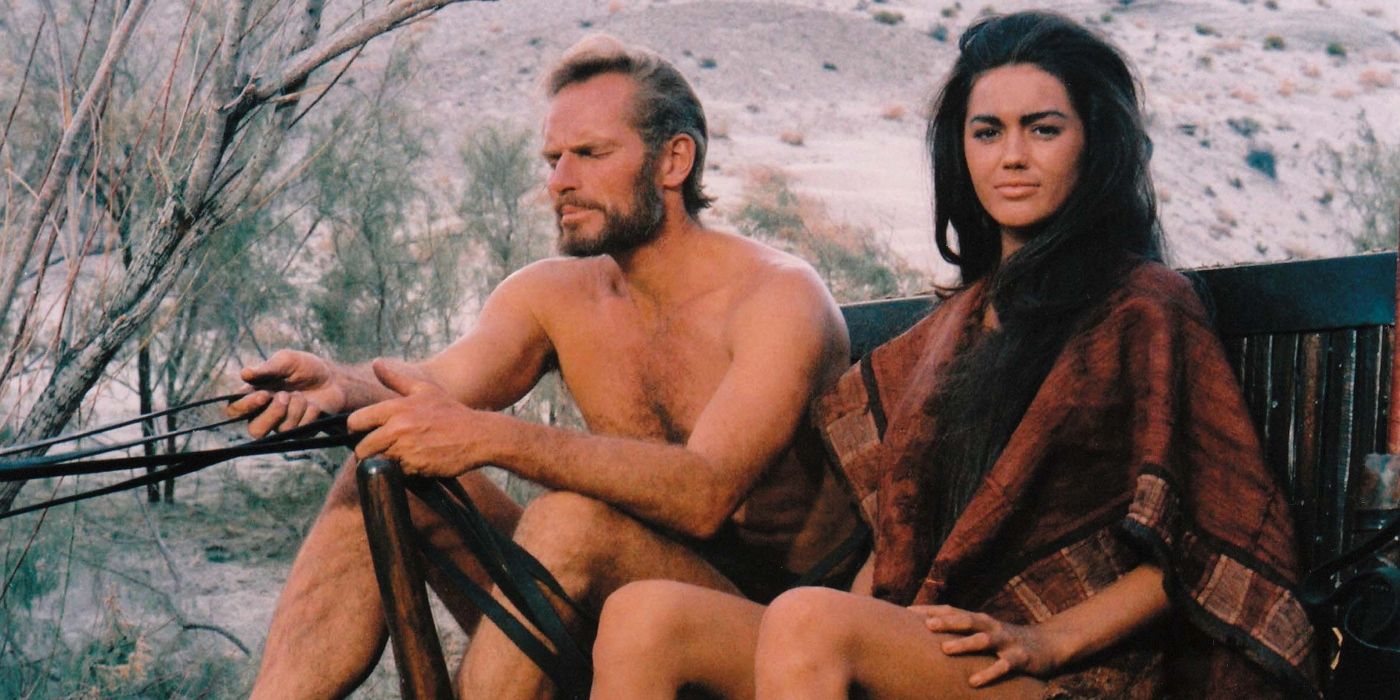The Big Picture
-
Planet of the Apes
has a bleak ending set on Earth destroyed by humanity. - The original novel’s ending had the hero return to Earth to find it controlled by apes.
- A potential ending with Nova pregnant was scrapped for a bleaker, more impactful conclusion.
Few movie endings are as ingrained in our collective consciousness as the final moments of Planet of the Apes. Well, of Franklin J. Schaffner’s 1968 Planet of the Apes, not the Tim Burton film. That final scene in which Taylor (Charlton Heston) and Nova (Linda Harrison) are riding across a beach until they reach a pile of corroded metal and stone that is then revealed to be a partly sand-covered Statue of Liberty is one of the most remembered and parodied movie sequences in history. It’s also one of the most bleak conclusions to ever cross our screens. The moment in which Taylor finds the Statue of Liberty doesn’t only mean that he has been on Earth all along and that humanity has brought forth its own destruction, it also represents a dark ending for Taylor’s journey itself: there is no world to which he can ever escape to be free of the claws of fundamentalists like Dr. Zaius (Maurice Evans). He will be forever trapped under his paw, discredited and treated as a beast. Sure, this had already become clear to him to some extent, but the ending solidifies that there is indeed no other option.
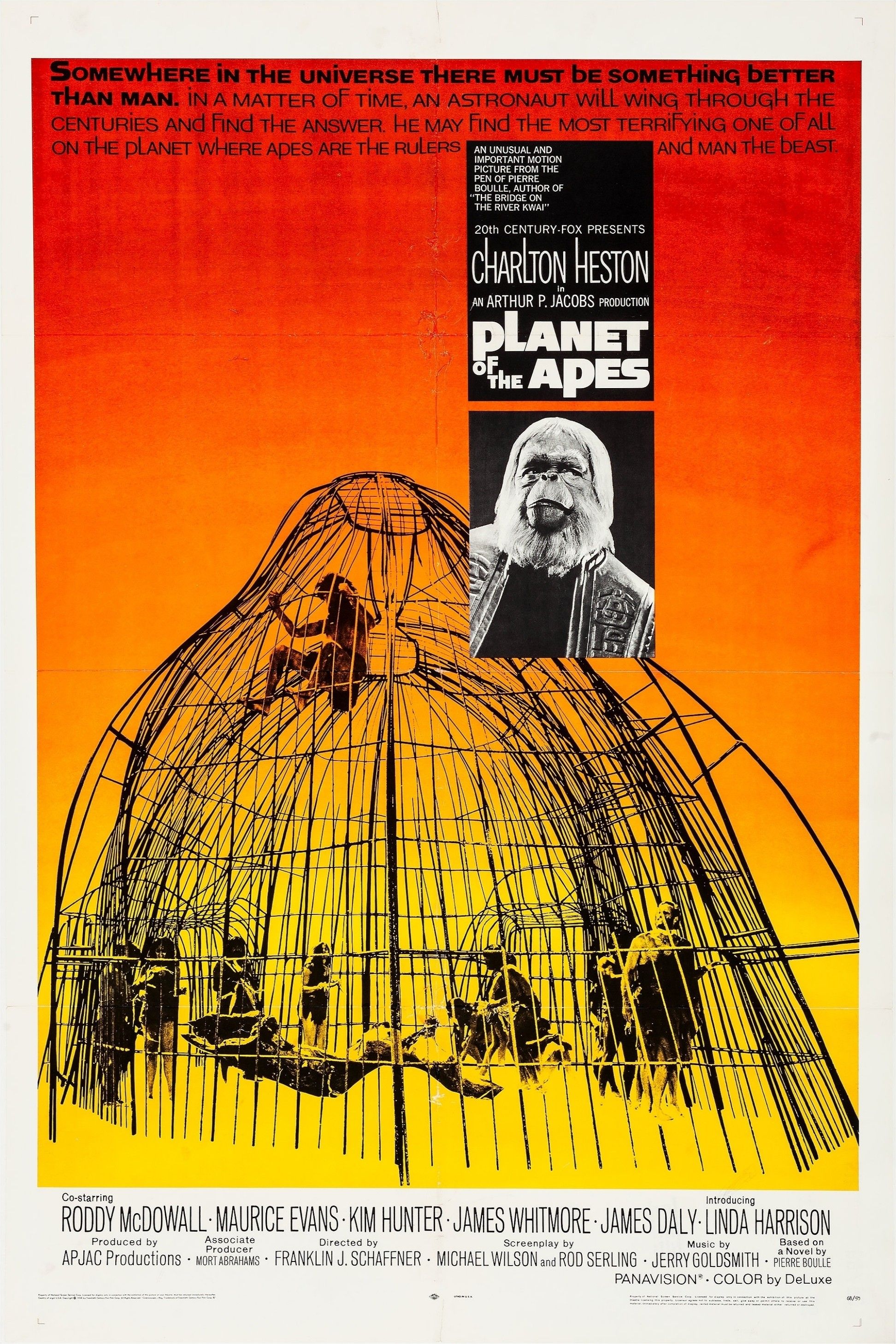
Planet of the Apes (1968)
An astronaut crew crash-lands on a planet where highly intelligent non-human ape species are dominant and humans are enslaved.
- Director
- Franklin J. Schaffner
- Runtime
- 112 Minutes
It’s a dark turn of events for a movie that could have been just another run-of-the-mill sci-fi adventure. And while it’s hard to determine for sure, it most likely is one of the reasons why Planet of the Apes was such a hit and is now considered a classic. However, this ending was not a given when the first few drafts of the film’s screenplay were being written by Rod Serling and Michael Wilson. After all, the ending of Schaffner’s movie is a far-cry from the original conclusion of the 1963 novel by French author Pierre Boulle that inspired it, in which the hero, Ulysse, manages to return to Earth only to find it controlled by apes. (You know, the Tim Burton approach.) Ideas were thrown around and, when we look at them, we realize that the ending to Planet of the Apes could’ve been a lot less depressing.
What Is ‘Planet of the Apes’ About?
Is that a good thing, though? Is a more chipper ending always the best option? Well, not really, particularly when it comes to a movie like Planet of the Apes, a commentary on humanity, racism, religious fanaticism, and the limits of science. It’s a story that only benefits from a bleak ending. The plot starts promising enough for our heroes, as Taylor, Dodge (Jeff Burton), Landon (Robert Gunner), and Stewart (Dianne Stanley) travel at lightspeed to some unexplored corner of the universe. In their spaceship, they will age only six months, but, in Earth years, they will have voyaged over two millennia into space. It’s a suicide mission, but one that has the crew obviously excited. Things, however, begin to go wrong as soon as the ship lands (or, rather, crashes) on a mysterious planet. Stewart is found dead due to a crack in her cryogenic chamber, and Taylor, Dodge, and Landon are left to explore a planet that initially seems to be completely devoid of life.
But circumstances change when the three astronauts come across a group of mute, caveman-like humans being hunted by apes on horseback carrying guns. With Dodge killed and Landon missing, Taylor is captured and taken to a laboratory where he is given a woman, whom he names Nova, to mate. Initially unable to talk himself, he is treated as a pest by the guards and scientists, but, again, things take a turn when he manages to communicate with behavioral scientist Zira (Kim Hunter) and her archaeologist fiancé, Cornelius (Roddy McDowall). From then on, with these two chimpanzees at his side, Taylor begins a battle to be recognized as an intelligent being and to convince the zealots who run ape society that he has indeed come from space. In the opposing corner is Dr. Zaius, a baboon that treats chimpanzees as “less than” and sees Taylor as a threat not only to the core tenets of ape faith but to their society as a whole.
Humans Are Responsible for Their Own Demise in ‘Planet of the Apes’
It soon becomes clear that there is no hope for Taylor and his advocates. Zaius is firm in his belief that Taylor has actually come from a secret tribe of intelligent humans, as well as hell-bent on charging Zira and Cornelius for heresy. With the help of Zira’s young nephew, Julius (Buck Kartalian), the three of them decide to escape into the desert that is called the forbidden zone. Nova tags along on a journey that culminates in their arrival at a cave full of strange artifacts discovered by Cornelius on a previous expedition. Zaius and his guards manage to reach them before they go in, but the ape leader is captured by Taylor and forced to witness the objects found by Cornelius, which include a human doll capable of saying the word “Mama.”
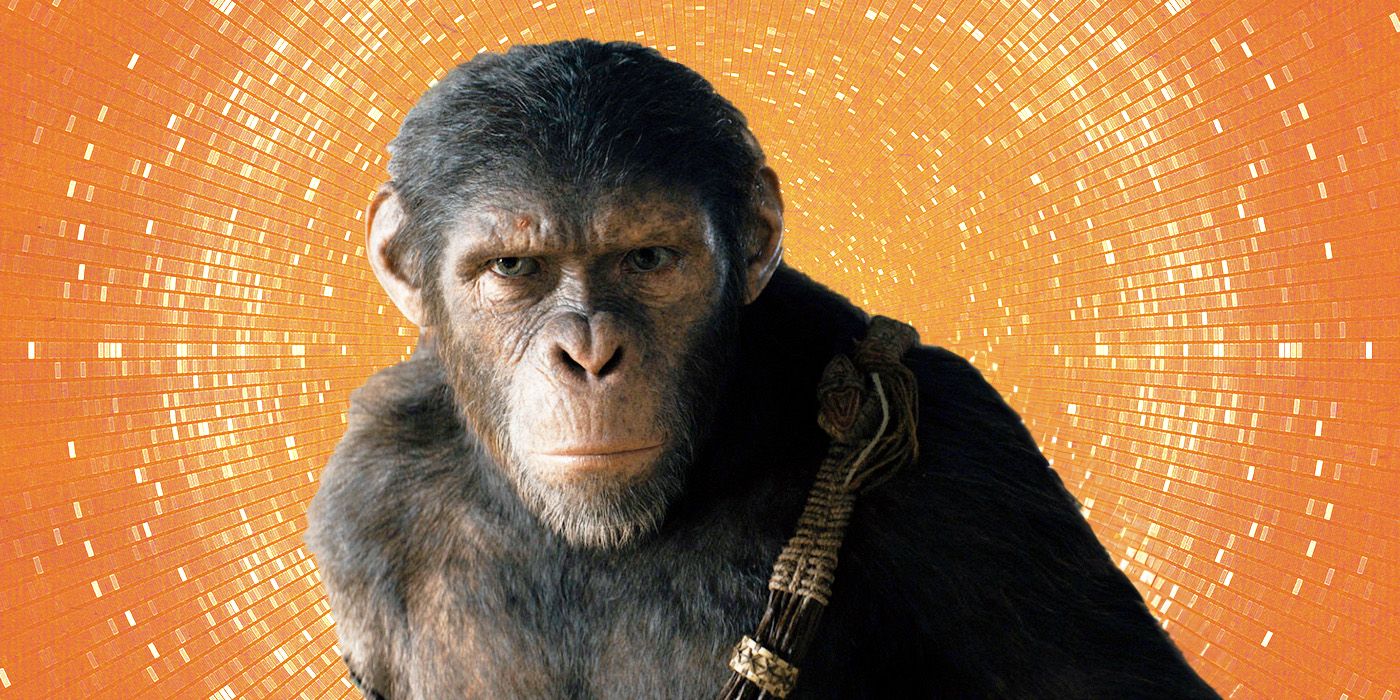
Planet of the Apes Is Straight-Up the Weirdest Sci-Fi Franchise Out There
The franchise has taken several bold steps in its multi-decade run.
Face to face with this evidence, Zaius is forced to admit that he had always known that there used to be an advanced human society on their planet, but that said humans were evil and basically killed each other, as well as other species, for sport. He tells his guards to destroy the cave and announces that Zira and Cornelius will still be tried for heresy, but allows Taylor to go ahead on his journey, alerting him to the fact that he may not like what he will find. And then comes the aforementioned ending. After riding on horseback along the shore for an unspecified amount of time, Taylor and Nova reach the ultimate proof of the existence of human society before the apes took over, a monument depicting a human person with a torch and a book in their hands, the Statue of Liberty. Unable to make sense of what is in front of her, Nova merely watches as Taylor throws himself on the ground, desperate and enraged by the knowledge that humanity has ruined everything for itself and that he has never left Earth.
‘Planet of the Apes’ Ending Is a Scary Reality Check
For the uninformed viewer, this ending also comes as quite a surprise. It is shocking that a movie we had believed to be taking place on a far away planet has actually been set on Earth all along, but that’s not all. The discovery of the Statue of Liberty also forces us to ponder further the similarities between ape society and our own. The same way that it makes us realize that the alien desert that causes such an impression in the first few scenes of the movie isn’t all that alien, it also drives home the point that ape culture isn’t that different from human culture. The prejudices experienced by some kinds of apes, particularly chimpanzees, is akin to the racism that exists in our own world, and the same can be said for the religious fanaticism and for the way that animals are treated in laboratories. After all, ape society developed not on its own, but upon the foundations of something that came before it, as the sequels and prequels would further explore.
But this ending took some time to achieve. In Boulle’s original novel, the protagonist, Ulysse, is indeed on an alien planet on which apes got the evolutionary upper hand. By the end of the story, he manages to return to Earth alongside Nova, but bizarrely finds that apes have taken over his beloved home planet. Ulysse, then, pops back into his spaceship and flies away. Years later, a manuscript written by him recounting his experience is found by two chimpanzees who discard it as fantasy, refusing to believe that it could have actually been written by a human. It’s an ending that, though not identical, comes a lot closer to the one that was used in Tim Burton’s 2001 Planet of the Apes, in which Mark Wahlberg’s Captain Davidson returns to Earth only to find it completely taken over by apes.
Rod Serling Wanted the Book’s Ending for the Movie
It’s an odd ending that might kind of work if we consider the story a comedy, but that completely takes away from it in a dramatic sense. Still, that was the ending that screenwriter Rod Serling wanted to use. In a 1972 interview for a Planet of the Apes special edition of Cinefantastique magazine, he spoke in some detail about his original draft, that not only had the apes living in a fully advanced 20th century society instead of a technological limbo, but also lifted Boulle’s original ending from the books. Then set to be transplanted to the screen by Pink Panther’s Blake Edwards, the screenplay reportedly did not follow the novel all that closely, using only the basic premise of astronauts “on a planet in which apes had reached evolutionary ascendancy.”
“I worked on the screenplay for well over a year, and thirty or forty drafts came out of it,” Serling confesses before making it clear that he wanted to go with the book’s original ending. Which, you know, kind of sounds like it would have made sense for a Blake Edwards project. Still, Serling also takes credit for the idea for the Statue of Liberty: “I always believed that was my idea.”
An Earlier ‘Planet of the Apes’ Draft Saved Humanity
While not much of Serling’s thirty or forty babies seem to have moved on to second screenwriter Michael Wilson’s hands (“The concept, and the thrust of the piece was mine. But the actual dialog was Michael Wilson’s”) the Statue of Liberty idea lived on. However, there was one big change that was made from Wilson’s pages to the screen. In his penultimate draft, the screenwriter had Taylor shot by a sniper right after finding the statue and Nova escaping into the forbidden zone, pregnant with his child. It was an idea, Wilson says, that left open the possibility of a sequel before sequels were even discussed. It was also an idea that left some hope on the table: “The meaning is clear: if her unborn child is a male and grows to manhood, the species will survive. If not, modern man becomes extinct.”
The idea of Nova having a baby, however, was shot down, reportedly by a Fox exec who found it distasteful. “I suppose that, if one defines the mute Nova as merely ‘humanoid’ and not actually human,” Wilson theorizes. And, yeah, to some extent, we all know that Taylor and Nova will eventually have sex, but it is pretty uncomfortable to think about it. The movie does not establish her character as an equal to Taylor, treating her more like a pet than anything else. Nova has virtually no agency or autonomy, so would she even be able to consent? It’s all very blurry and potentially weird, to say the least.
But wrapping up the movie with a pregnant Nova would also undermine the bleakness of the ending. And, thus, the message would not hit home with the same strength. After all, our final thought upon watching the film would no longer be about how humanity destroyed itself, but how it can still survive. This could prove disastrous for a story like Planet of the Apes, which is so much about humanity’s shortcomings, and could even result in a much less memorable film. So, hey, thank you, weirded out Fox exec! Your disgust helped make history.
Planet of the Apes is available to watch on Hulu in the U.S.


